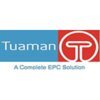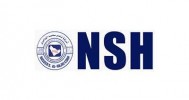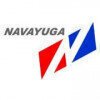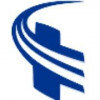
i
BACS HITECH
ENGINEERING
Filter interviews by
BACS HITECH ENGINEERING Interview Questions and Answers
8 Interview questions
Wind turbine alignment process ensures the blades are properly positioned to maximize energy production.
Alignment involves adjusting the angle and position of the blades to face the wind direction for optimal efficiency
Proper alignment helps reduce wear and tear on the turbine components
Alignment may be done manually or through automated systems
Regular maintenance checks are necessary to ensure alignment is mainta...
Commissioning is the process of ensuring that systems, equipment, and facilities are designed, installed, tested, operated, and maintained according to the operational requirements of the owner or final client.
Commissioning involves verifying and documenting that all systems and components of a project are installed and functioning correctly.
It includes testing, adjusting, and balancing systems to ensure optimal p...
Basic components of a wind turbine include blades, rotor, nacelle, tower, and generator.
Blades: Capture wind energy and convert it into rotational energy.
Rotor: Connects the blades to the nacelle and spins to generate power.
Nacelle: Houses the gearbox, generator, and other components.
Tower: Supports the rotor and nacelle at an elevated height.
Generator: Converts rotational energy into electrical energy.
Wind turbines provide clean, renewable energy and help reduce greenhouse gas emissions.
Wind turbines generate electricity without producing greenhouse gas emissions or air pollutants.
They help reduce reliance on fossil fuels, which contribute to climate change.
Wind energy is renewable and sustainable, unlike finite fossil fuels.
Wind turbines have a low carbon footprint compared to traditional power plants.
They can...
Transformer rating is always in kVA due to the nature of AC power and the need to consider both voltage and current.
kVA takes into account both voltage and current
AC power requires consideration of both voltage and current
kVA is a measure of apparent power
kVA is used to size transformers based on expected load
Hazards can be identified by observing the workplace and work processes. Risk assessment can be done by analyzing the likelihood and severity of the hazard.
Conduct a workplace inspection to identify potential hazards
Review incident reports and near-miss reports to identify recurring hazards
Consult with employees and supervisors to identify hazards they have observed
Analyze the likelihood and severity of the hazard...
Yes, I am familiar with preparing risk assessments.
Identify hazards and potential risks
Evaluate the likelihood and severity of each risk
Determine appropriate control measures to mitigate risks
Document findings and communicate with relevant stakeholders
Regularly review and update risk assessments
For example, in a construction site, hazards may include falls from heights, electrical hazards, and exposure to hazardou...
Operation of a GIS sub-station involves managing electrical equipment for efficient power distribution and safety.
GIS (Gas Insulated Switchgear) uses gas insulation for compact design, reducing space requirements.
It operates at high voltage, ensuring safety and reliability in power distribution.
Regular maintenance is crucial; for example, checking gas pressure and insulation integrity.
GIS systems are often used in...
BACS HITECH ENGINEERING Interview Experiences
7 interviews found
(1 Question)
- Q1. About yourself & educational background
(2 Questions)
- Q1. Explain basic components of a wind turbine ?
- Ans.
Basic components of a wind turbine include blades, rotor, nacelle, tower, and generator.
Blades: Capture wind energy and convert it into rotational energy.
Rotor: Connects the blades to the nacelle and spins to generate power.
Nacelle: Houses the gearbox, generator, and other components.
Tower: Supports the rotor and nacelle at an elevated height.
Generator: Converts rotational energy into electrical energy.
- Q2. What are the environmental benefits of wind turbines?
- Ans.
Wind turbines provide clean, renewable energy and help reduce greenhouse gas emissions.
Wind turbines generate electricity without producing greenhouse gas emissions or air pollutants.
They help reduce reliance on fossil fuels, which contribute to climate change.
Wind energy is renewable and sustainable, unlike finite fossil fuels.
Wind turbines have a low carbon footprint compared to traditional power plants.
They can help...
I appeared for an interview in Aug 2024.
(1 Question)
- Q1. What is your qualifications
- Ans.
I have a Bachelor's degree in Engineering, 5 years of experience in project management, and proficiency in CAD software.
Bachelor's degree in Engineering
5 years of experience in project management
Proficiency in CAD software
(2 Questions)
- Q1. How much Your expected Salary
- Ans.
My expected salary is negotiable based on the responsibilities and benefits offered by the company.
I am open to discussing salary based on the scope of the role and the overall compensation package.
I have done research on industry standards and salary ranges for similar positions.
I am looking for a competitive salary that reflects my experience and skills.
I am also interested in benefits such as healthcare, retirement ...
- Q2. How much Your notice period
(2 Questions)
- Q1. What is Wind turbine alignment process .
- Ans.
Wind turbine alignment process ensures the blades are properly positioned to maximize energy production.
Alignment involves adjusting the angle and position of the blades to face the wind direction for optimal efficiency
Proper alignment helps reduce wear and tear on the turbine components
Alignment may be done manually or through automated systems
Regular maintenance checks are necessary to ensure alignment is maintained ...
- Q2. What is commissioning.
- Ans.
Commissioning is the process of ensuring that systems, equipment, and facilities are designed, installed, tested, operated, and maintained according to the operational requirements of the owner or final client.
Commissioning involves verifying and documenting that all systems and components of a project are installed and functioning correctly.
It includes testing, adjusting, and balancing systems to ensure optimal perfor...
Interview Preparation Tips
- Q1. 400/220 kv gis transmission line substation
- Q2. Operation gis sub-station
- Ans.
Operation of a GIS sub-station involves managing electrical equipment for efficient power distribution and safety.
GIS (Gas Insulated Switchgear) uses gas insulation for compact design, reducing space requirements.
It operates at high voltage, ensuring safety and reliability in power distribution.
Regular maintenance is crucial; for example, checking gas pressure and insulation integrity.
GIS systems are often used in urba...
- Q3. Mantance electrical equipment
I applied via Company Website and was interviewed in Jan 2024. There was 1 interview round.
(2 Questions)
- Q1. WHERE ARE YOU FROM?
- Q2. How soon can join?
- Ans.
I can join immediately or within two weeks, depending on the onboarding process and any necessary arrangements.
I am available to start immediately if needed.
If there are specific onboarding procedures, I can join within two weeks.
I can also accommodate a later start date if that works better for the team.
For example, if you need time for paperwork or training, I can adjust my start date accordingly.
Interview Preparation Tips
THEY MENTIONED IN THE JOB ROLE AND DESCRIPTION SALARY RANGE 3.5 LPA - 4 LPA
AFTER INTERVIEW THEY JUST GIVING ONLY 2.4
THEY DIDN'T NOT PROVIDE OFFER LETTER BEFORE JOINING THEY TELL WILL PROVIDE AFTER 1 MONTH
SALARY TIME IS 45 DAYS LETTER IF YOU WORK IN JULY YOU WILL GET SALARY AFTER 20 AUG
THEY DIDNOT TOLD PRIOR FOR WORK AT 2 LOCATION AFTER REACH OFFICE AT JOINING THEY ARE TELLING IF YOU WANT TO WORK YOU HAVE TO 3 DAY WORK RAIPUR 3 DAY BHILAI AND TRANSPORT ALSO MANAGE OUR SELF THAT WILL BE REIMBURSED BUT NOT CONFIRM THEY DIDNOT PROVIDE GUEST HOUSE EVEN YOU ARE FEOM OTHER STATE SALARY BREAKUP IS VERY WORST THEY TREAT YOU LIKE A LABOUR ON STREET AND THEY PROVIDE YOU WORK AS CUSTOMER SERVICE OR BPO TYPE FORCE TO GIVE 4 RATING DIDN'T PROVIDE TA & DA
I applied via Approached by Company and was interviewed in Apr 2023. There were 2 interview rounds.

(2 Questions)
- Q1. Why transformer rating always in a kva
- Ans.
Transformer rating is always in kVA due to the nature of AC power and the need to consider both voltage and current.
kVA takes into account both voltage and current
AC power requires consideration of both voltage and current
kVA is a measure of apparent power
kVA is used to size transformers based on expected load
- Q2. Turbine is working as prime mover we can say yes or no
(2 Questions)
- Q1. Are you know how to prepare risk assessment
- Ans.
Yes, I am familiar with preparing risk assessments.
Identify hazards and potential risks
Evaluate the likelihood and severity of each risk
Determine appropriate control measures to mitigate risks
Document findings and communicate with relevant stakeholders
Regularly review and update risk assessments
For example, in a construction site, hazards may include falls from heights, electrical hazards, and exposure to hazardous mat...
- Q2. Are you know about hira
- Ans.
Yes, HIRA stands for Hazard Identification and Risk Assessment.
HIRA is a systematic process of identifying potential hazards and assessing the associated risks.
It involves identifying hazards, evaluating the likelihood and severity of harm, and implementing controls to mitigate the risks.
Examples of hazards include chemical exposure, fire, electrical hazards, and ergonomic risks.
HIRA is an important tool for safety off...
(1 Question)
- Q1. How to identify hazard and their risk
- Ans.
Hazards can be identified by observing the workplace and work processes. Risk assessment can be done by analyzing the likelihood and severity of the hazard.
Conduct a workplace inspection to identify potential hazards
Review incident reports and near-miss reports to identify recurring hazards
Consult with employees and supervisors to identify hazards they have observed
Analyze the likelihood and severity of the hazard to d...
Interview Preparation Tips
Interview Questionnaire
1 Question
- Q1. About Sound knowledge of Electrical Engineering
Top trending discussions






Interview questions from similar companies

I applied via Naukri.com and was interviewed in Jan 2021. There were 3 interview rounds.
Interview Questionnaire
1 Question
- Q1. Asked about previous experience
Interview Preparation Tips

Interview Questionnaire
1 Question
- Q1. Tell me about the project in your resume and your role in it
- Ans.
Led a data analysis project to optimize marketing strategies for a retail client, enhancing customer engagement and sales.
Conducted data collection and analysis using SQL and Excel to identify customer purchasing patterns.
Collaborated with the marketing team to develop targeted campaigns based on insights derived from data.
Presented findings to stakeholders, resulting in a 15% increase in customer engagement within thr...
Interview Preparation Tips

- Q1. How would you describe the relationship between the HR department and the rest of the company
- Ans.
The HR department acts as a bridge, fostering collaboration, communication, and alignment between employees and management.
HR ensures alignment of company culture with employee engagement, e.g., organizing team-building activities.
HR mediates conflicts and promotes a positive work environment, such as implementing conflict resolution training.
HR collaborates with departments to identify staffing needs, e.g., working wi...
- Q2. What interests you about this industry
- Ans.
I'm drawn to this industry for its dynamic nature, opportunities for innovation, and the chance to make a meaningful impact on people's lives.
The industry is constantly evolving, which keeps my work exciting and challenging.
I am passionate about innovation; for example, advancements in technology can significantly improve efficiency.
I appreciate the opportunity to contribute to society, such as improving customer exper...
BACS HITECH ENGINEERING Interview FAQs
Tell us how to improve this page.
BACS HITECH ENGINEERING Interviews By Designations
- BACS HITECH ENGINEERING HR Executive Interview Questions
- BACS HITECH ENGINEERING Senior Electrical Engineer Interview Questions
- BACS HITECH ENGINEERING Safety Officer Interview Questions
- BACS HITECH ENGINEERING Project Engineer Interview Questions
- BACS HITECH ENGINEERING Project Engineer Mechanical Interview Questions
- BACS HITECH ENGINEERING Electrician Interview Questions
Interview Questions for Popular Designations
Overall Interview Experience Rating
based on 6 interview experiences
Difficulty level
Duration
Interview Questions from Similar Companies
BACS HITECH ENGINEERING Reviews and Ratings
based on 109 reviews
Rating in categories
|
Project Engineer
16
salaries
| ₹3 L/yr - ₹6.5 L/yr |
|
Electrical Engineer
7
salaries
| ₹3 L/yr - ₹4.8 L/yr |
|
Engineer
5
salaries
| ₹2.1 L/yr - ₹7.7 L/yr |
|
Field Engineer
5
salaries
| ₹2 L/yr - ₹3.5 L/yr |
|
HR Executive
5
salaries
| ₹2.5 L/yr - ₹3.5 L/yr |

Nasser S. Al Hajri Corporation

Navayuga Engineering Company

B.L. Kashyap & Sons

L & W Constructions
- Home >
- Interviews >
- BACS HITECH ENGINEERING Interview Questions











